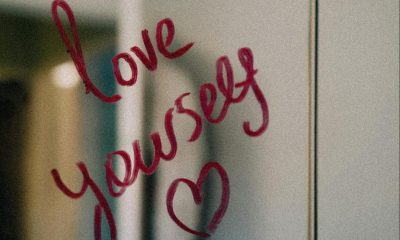
Vinyl records are becoming the music industry’s highest-grossing physical format. (Pexels Photo)
By Brock Ruggles, Arizona State University, The Conversation
I am a vinyl record aficionado. My father, also a musician, recently gave me his vinyl collection, and it made me reflect: Why, despite limited use of my arms due to disability, do I still go to the effort of playing vinyl albums, old or new, daily?
The historian in me acknowledges a bit of nostalgia and fascination with vintage audio processes, while the musician in me prefers the open sound of analog vinyl over the compromised, “flat” sound of low-resolution streaming.
But nostalgia and audiophilia do not fully explain the depth of meaning ascribed to these objects. The experience of placing the record on a turntable is ritualistic, with the albums themselves elevating me, and many others, beyond the experience of mere sound.
As I learned from my significant other, Jennifer, who has a background in religious studies, the vinyl experience parallels other forms of the sacred in everyday life.
Vinyl once reigned supreme
The vinyl experience, including the necessary ritual of interacting with the physical medium, has persisted for over a century despite the rise and fall of various formats of recorded music.
The recorded music industry arose in the early 20th century to fulfill what historian Daniel Boorstin described as the “repeatable experience.” By the early 20th century, technology provided the means of re-experiencing a moment in time by looking at a photograph, watching a film or listening to a recording. People wanted to hear a song they enjoyed repeatedly. Advances in audio tape recording and mass production of records provided the means of that repeatable experience.
The phonograph, or record player, quickly became a popular staple of many households. By 1948, long-playing, or LP, vinyl records came onto the market as an upgrade to acetate records, and vinyl would go on to dominate the music industry into the 1980s.
During the 1970s, when the recording industry began tracking yearly sales by format, listeners purchased 74% to 82% of recorded music on vinyl. Cassettes and 8-track tapes took a small share of vinyl sales, but by 1982, 8-track production ceased. In 1985, the number of cassettes sold surpassed the units of vinyl sold and continued to grow until 1993, when CD sales overtook cassettes.
Meanwhile, vinyl sales all but disappeared through the 1990s and first decade of the 2000s, accounting for less than 1% of all music revenues each year. Only noncorporate, independent labels kept the vinyl format alive, sometimes enticing fans with vinyl-only extra tracks.
Gradually, however, a small but significant cohort of music listeners brought the format full circle – from records to tapes, CDs, digital downloads and streaming – and started returning to vinyl.
In an era of cheap and easy access to streaming music, vinyl record sales nonetheless rank higher as a proportion of all recorded music revenues in the United States than at any time since 1988, now accounting for 8% of all music revenues and 17.4% of all nonstreaming music sold, ranking only behind downloads.
Vinyl records as sacred objects
Multiple factors explain the vinyl resurgence – among them certainly the nostalgia and love of analog sound that I and others experience. But to many music fans, these vinyl albums are sacred objects.
Religious studies scholar Ann Taves observes that “the tendency to set some things apart is a deeply rooted human characteristic.” When we set things set apart and infuse them with value and meaning, we may be practicing everyday religion whether we realize it or not.
The separation cues us to the importance of the object being distinct and not just part of a collection. The relationship established between that object and something meaningful beyond ourselves takes us into spiritual territory.
Vinyl enthusiasts demonstrating these tendencies abound on platforms such as YouTube. They speak in tones of reverence for their rare or meaningful finds, demonstrating a careful and ritualized handling of the artifacts.
Most enthusiasts perform ritualistic cleaning processes, buy special archival sleeves to preserve their records, and maintain a personal collection database. They dedicate entire rooms of their homes to meticulously curated archives of records and create listening rooms. Both are shrines to a repeatable vinyl listening experience that elevates the records into unique places of profound meaning. They are artifacts of connection to the past and hold the means to transport listeners beyond themselves.
To experience music on vinyl, the listener must pull the record from the shelf, carefully unsleeve and clean it, place it on the turntable and set it to spin. The needle drops and the familiar magical crackle begins for a few seconds before the beauty of the analog music is transmitted from the vinyl disc into the listener’s ears.
With streaming or downloaded music, there is no physical relationship or interaction with the song. The sound of the music may still be special, but the object has been removed. There is nothing to set apart. We cannot carefully clean, shelve, protect, admire or display a digital version of a song. The song may be beautiful, but the object that provides a deeper connection is gone.
Former Black Flag vocalist and spoken word artist Henry Rollins explains that today, “you’re listening to something served to you from some cloud, something out in the ether, but you can’t touch it. So what stays the same is analog. It always sounds good to the ear. And it’s what’s left of humanity meeting music.”
Finding the sacred
My dad’s vinyl records – and those I have added and will pass along – comprise some of the most sacred objects in my household: those I treasure and understand as part of a legacy of music and family, of shared, repeatable meaning.
Not all listeners would characterize their return to vinyl as a spiritual experience or religious journey. But they are nonetheless drawn to its repetition and its beauty – to something made, kept, handed down and cherished. Space and time are set aside for the ritual of listening. We hold an album reverentially because it reciprocally holds a place of meaning and connection, special and apart.
Jennifer Wilken, associate vice provost, Arizona State University, contributed significantly to this piece.![]()
Brock Ruggles, Assistant Teaching Professor of History, Arizona State University
This article is republished from The Conversation under a Creative Commons license. Read the original article.





















